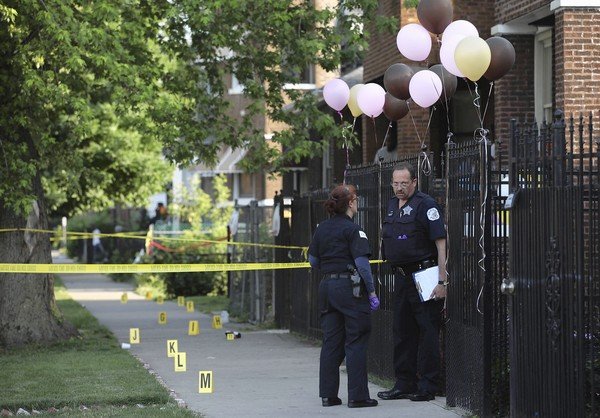
I spent a good part of this week staring at, and occasionally working with, crime data in Excel. Data can be dehumanizing; Excel almost always is, so it was necessary to read Barbara Brotman's piece on the death of Davonte Flennoy, a 20-year-old who was shot in Marquette Park while I was poring over statistics. Brotman had previously encountered Flennoy as a high school student, as part of the Tribune's coverage of CPS programs that—somewhat chillingly—used hard data to predict the odds that a schoolkid would be shot, or shoot. Flennoy was in the "ultrahigh" range: 20 times more likely than the average student.
His father spent five years in a penitentiary. The year before he was enrolled in the advocate program, Flennoy missed 97 days of school. A friend died in his arms of gunshot wounds. By the time he went to Atlanta, where he had a grandmother, he had lost three friends to violence.
A child, and the murder of a friend's girlfriend, pulled Flennoy back into the web that the numbers identified, all the way from Atlanta Metropolitan State College.
Flennoy was shot on Monday. Brotman wrote about him on Wednesday. The same day, Noreen S. Ahmed-Ullah reported that Youth Advocate Programs, the contractor that identified Flennoy's risk and ran the program that briefly got him out of the city, was facing near-total cuts for its Chicago work:
Last year, Williams said, the program was given about $1.2 million to organize programs for 400 children from June through August. This year, its contract expires at the end of June, and Williams said the program has been told by CPS that it will get only $50,000 for those three months.
It's a bit like CeaseFire, only further back in the chain of violence; speaking of which, that program just got $1.5 million from the city to staff up in four communities for a year.
Flennoy's murder, the cuts to YAP, and the new funding of CeaseFire reminded me of the work of Andrew Papachristos, a Chicago native whose family restaurant was burned down by gang members in the '90s. He was a Guardian Angel at 16, the director of a gang-focused non-profit at Loyola as an undergrad, and is a recent U. of C. Ph.D in sociology. He's since moved on to UMass-Amherst and Harvard, but most of his work inevitably focuses on his home city.
Over the last five years, 191 people have been murdered in the 11th Police District. This means just about 3 out of every 1,000 residents on the West Side are likely to be a homicide victim — a rate more than three times higher than the other areas of the city.
Social Network Analysis tell us that this risk is vastly overstated because it suggests that all residents are equally likely to be killed. The reality is quite different: About 70 percent of the homicides over the last five years occurred in a network consisting of only 1,500 people, all of them with criminal records. Each person in this network had, at some point, been arrested with at least one other person in the network.
The vast majority of murders on Chicago’s West Side happen in a small world of connected individuals. For people in this network, the odds of being a homicide victim skyrockets to 30 out of every 1,000 people.
In a Boston study community, he found that 80 percent of gunshot victims belonged to a social network of just 700 people. He's expanding his research, and sees social network analysis as, in a way, the next CompStat:
[M]y guess is that in 5 to 10 years—probably 10—sort of network mapping for police will be where sort of hotspot mapping is now. I think that intuitively people understand more now—because of things like Facebook and Amazon and the Internet—how connections matter.
Journalism has been soaked in this sort of social networking for a long time, at least in the context of the Web. That hasn't overflowed into crime reporting in the way that, in academia, it's been adopted by criminologists and sociologists—who, to be fair, have been studying social networking for decades. But there are hints that the Web will allow journalists to move in that direction soon.
Photograph: Chicago Tribune


